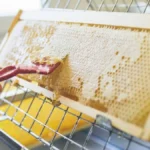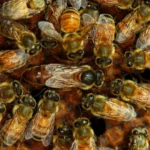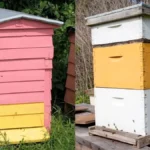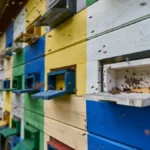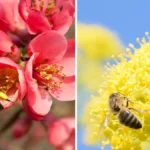How many hives can one person manage? This is not a question with an easy answer, so let us explore the factors that will directly impact how many hives you can manage in your area, with your capability.
A Precautionary Note To Beekeepers Who Want To Scale Up
There is a funny thing that happens when we have two beehives in our backyards and decide we want to scale up to being commercial beekeepers. Let me explain how scale up works and how this helps you decide “how many hives can one person manage?” where one person equals you.
What is Scaling Up?
Scaling up refers to the process of making any activity or operation or machine bigger. I have been involved in many technology scale-ups, and it is quite amazing how small miscalculations at the laboratory scale become monumental mistakes at a large scale. When we scale up a beekeeping operation the rules of any scale-up apply, and the biggest limiting factors are yourself, your strength, your health, your wealth (capital available), and your available time.
To ascertain if you can scale up your beekeeping to something that can support you, let us look at a few important scaling factors.

How Many Beehives In One Location Are Practical In Your Area?
This is an important factor. If you live in an area where you can keep 200 hives in an apiary and you are blessed with lots of strong nectar flows a year, this means that you can minimize your time and cost spent traveling between apiaries.
In my area, we have intermittent rain and long periods of drought that are completely random. In a good year, an apiary can support 100 hives, and in a bad year, an apiary can support 10 hives. So this means that in a good year, I can cluster apiaries and achieve greater efficiency, and in bad years, I have to space the apiaries out. Hence in good years, I make more honey, spend less time and money on moving around, and achieve greater profitability.
So when you start a business plan on how many hives you can place in an apiary, start on a worst-case scenario, as this is the realistic scenario. For me, if I did my business plan again, I would start on 10 hives an apiary, and then anything more than that would be a bonus and ensure greater profitability.
Read more about: How Long Does It Take Bees To Make A Hive? How To Get Your Bees In The Fast Lane
How Many Hives Can One Person Manage?
This is an important factor to consider in your scaling calculations. There are a few important things to consider here if you are going to do everything yourself:

Beekeeper Age
If you are 18-25 you have a natural resilience that will get lost as you get older. Common sense increases with time, but physical fitness decreases. This is a sad fact. So as you get older and wiser, your efficiency improves to a point as you make fewer mistakes (stupid mistakes are educational, and youth and stupid mistakes are intrinsically linked). This however reaches a peak sometime in your late thirties, after which, no matter how much you know, your back will probably let you down due to lifting a lot of heavy boxes of honey.
You can mitigate the effects of age (at any age) by choosing smaller bee boxes. Shallow supers are much lighter than deep supers. The human back is an irreplaceable and essential part of any beekeeping operation, and making your back last as long as possible ensures you can profit from beekeeping for longer. Lifting heavy weights is not a show of strength – it is a show of stupidity. Remember that, and you will lift moderate weights for longer.
From an age perspective answering the question “how many hives can one person manage?” it is better to aim to have fewer hives when you are young, and make the hives as lightweight as possible to minimize wear and tear on your spine. This means that you can optimize the number of years you can keep bees and the long-term honey yield will be greater than being a 30-year-old superhero lifting 500 80-pound boxes of honey a day for 5 years, and then being a cripple for the rest of your life with osteoarthritis in your spine (I speak from experience on this sadly).
Distance between Apiaries

If you are able to locate apiaries so they are 5 miles apart, you will spend very little of your time driving around and a lot more time keeping bees. Put another way, if you have to drive for twenty minutes between apiaries, you will spend most of your day working bees and hence have more time to work bees, and can have more hives. If you have to drive for three hours between apiaries, you will spend most of your day driving, and very few hours working bees. However, if you can have two hundred hives in two spots that are three hours apart, versus 10 hives dotted 5 miles apart, you will find the results are about the same.
In terms of calculating “how many hives can one person manage?” if you are able to maximize colony counts in an apiary, and minimize the distance between the apiaries, you will achieve the maximum efficiency of honey produced in the time allotted to you on this planet.
From a distance between apiaries, the perspective answering the question “how many hives can one person manage?” is all down to yield per hive. If you can get a crazy yield per hive in two apiaries with a huge number of hives, and you spend a whole day traveling between these, versus a small yield in a bunch of closely spaced low hive count, low yield apiaries, you have to make a choice and do the calculations based on experience gained over time.
Read more about: Can You Eat Honey From A Dead Hive
Yield per Hive – How Many Hives Can One Person Manage?
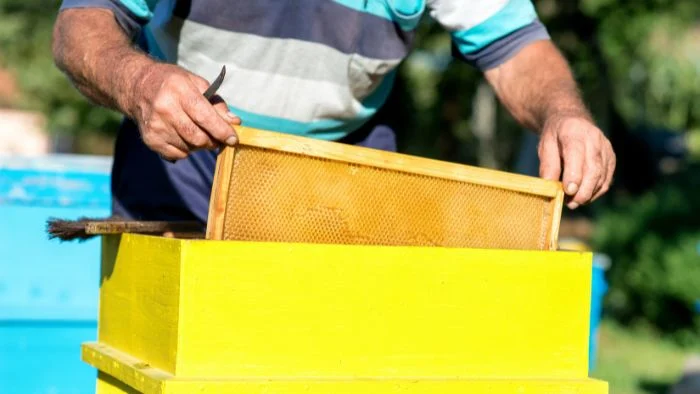
If you are in a region where you can have 200 hives in an apiary, and you harvest 60 pounds of honey per hive per year, then you are blessed. If you are in an area such as mine, where you get 20-40 pounds of honey if you are lucky, and can keep 10 hives an apiary, you are far less blessed. However, the honey I produce is exquisite due to the exceptional biodiversity in the honey, and it makes amazing mead. By including a value addition step, we are able to increase our profit margin on a pound of honey due to the quality of the honey and my technology for making mead.
In terms of my calculations on “how many hives can one person manage?” I then factor in the actual profitability of honey sales, because if you can make more money out of less honey, you need to work fewer hives, and you will last longer before you wear yourself out.
How Many Beehives Can One Person Manage?
In order to answer this question we need to set up trial apiaries and see how much honey you get, and how good you are at carrying honey. Then you need to fully populate an apiary – this means you keep pushing the number of hives up until you notice a deterioration in the output of the hives. When you find that the hives start starving, and just not producing as much honey you have reached your carrying capacity, and you can reduce that apiary by about 20% to ensure that it will always produce at its maximum.
Now you have one fully stocked apiary – it will take a year or two to get to this level. See how you handle an apiary of say 50 to 100 hives. This becomes your production apiary benchmark and you can put this into your spreadsheet to calculate your time inputs, transport inputs, and how your health manages. From here you can calculate how many similar apiaries you could handle, and what your rough honey output would most likely be.
How Many Beehives To Make A Living?
The Sales Price Of Honey Decreases With The Volume Produced.
I have met many backyard beekeepers who sell honey to their friends and then extrapolate how much money they would make at this price to a bigger operation. When they scale their operation, however, they find that the more honey they produce, the lower the sales price of that honey. This strongly affects how many hives can one person manage – as your returns decrease with increased work.
What this means, in reality, is that you can make as much money selling the honey from 20 hives to your close friends, colleagues, and their friends, as you can make selling the honey from 100 hives to the bulk market.
You can be creative, and try and market honey on Instagram and Facebook, and so on, but there is really a ceiling to this market, after which you are selling your honey into the bulk market and you will receive less than half as much per pound as you would selling to the first market. This means that your business model has to factor in the fact that the more honey you produce, the less you will get for it.
This varies from area to area, but with increasing global energy costs, it means the realistic working range of a beekeeping operation declines, as there is a ceiling to how much you can charge for bulk honey before the honey from countries with cheaper labor, and better transport infrastructure outcompete you. Hence if you want to understand the worst-case scenario for your honey, it must be price competitive with Brazilian, Argentinian, and Chinese honey.
Chinese honey can be of very high quality or can be absolutely adulterated. This means that a skilled buyer can buy very cost-competitive high-quality honey from China, where the infrastructure and government support for beekeepers is better than in any other region of the world. For long-term planning, use the current bulk price of honey from China as a starting point to work out if your business plan is viable at a specific scale. Then work out if you have a competitive advantage over such honey – a cleaner environment, national pride in homegrown products, fewer pesticides, poisons, etc, and work out how long you can maintain this advantage.
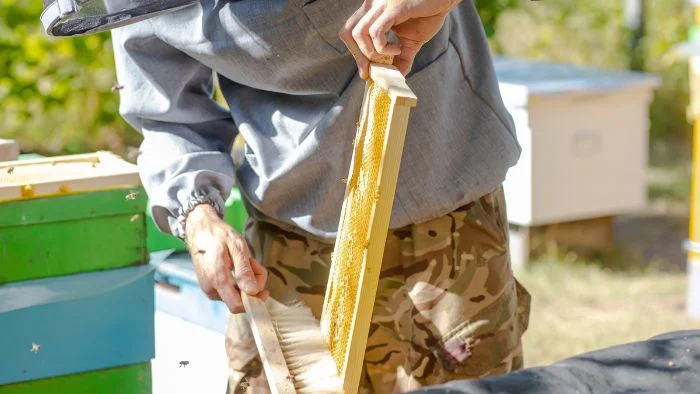
How Much Does It Cost For Hobby Beekeeping?
Let’s define a hobby beekeeper as somebody that has a beesuit (never buy a cheap beesuit – this one is $150 and good quality – a smoker ($30) and a set of gloves ($15) – and two hives of decent quality($300). You may need to buy two packages of bees to fill these up and a good spot to get them is here. Budget about $150 a package. Look at about $800 dollars to start your hobby.
If you are frugal and look around online you will often find people selling beekeeping equipment – it is one of those hobbies that grabs some people, and not others, so often you can get a complete setup for a fraction of the above price. Many beekeepers get old and die, and often their families are delighted to pass on the equipment to a young enthusiastic beekeeper who will give them a few bottles of honey from Gramps/Gramas hives every year. When I started beekeeping most of the equipment I got was sourced this way. People love helping young people because it reminds them of what they lost as the reality of the adult world wears away the dreams they once had.
How Much Space Do You Need For A Beehive?
This will depend on the type of bees. African bees need a bit more space because they can be slightly jumpy when they see people close by. I know people who keep African bees in a space that is 6 feet by 6 feet per hive in their backyards. Generally, other races of bees work in a similar space, and just remember to keep the bees relatively far away from any dogs, cats, other animals, and people that cannot get far away from the bees should they start stinging and become upset.
For an apiary of 30 hives, work on a space that is 20 yards square minimum.

Last Thoughts: How Many Hives Can One Person Manage?
The decision on how many hives can one person manage basically boils down to you, your energy, and your resources. As they often say, if you want to make a million dollars keeping bees start with 10 million dollars. It is a good idea to grow incrementally and learn your skills. Work with another beekeeper to get some experience on a bigger operation, and see what you are capable of. As a rule of thumb, the answer to “how many hives can one person manage?” a healthy strong man or woman in their mid 20’s to mid-’30s can manage 300 to 600 hives in most parts of the world.
Above this number, you need to mechanize and hire seasonal help. There is an abundance of youngsters leaving high school now who actually want to learn about bees, so the time is right for working with this trend and making the world a better place.
Beehives per Beekeeper FAQ’s
1. How many beehives can one person handle?
The number of beehives one person can handle depends on various factors such as experience, physical fitness, and local conditions. On average, a single professional beekeeper can manage between 50 to 300 hives, with efficiency improving over time.
2. What factors affect how many hives I can manage?
Key factors include your age, physical ability, apiary distance, climate, and honey yield per hive. Beekeepers need to consider these factors when determining the optimal number of hives they can handle.
3. Can a beginner beekeeper manage multiple hives?
A beginner should start with 1-2 hives to gain experience. As confidence and skills improve, the number of hives can gradually increase. It’s essential to understand hive management basics before scaling up.
4. How does distance between apiaries impact hive management?
The closer your apiaries are, the more hives you can manage effectively. Traveling long distances between apiaries reduces the time available for hands-on hive care, limiting the number of hives you can handle.
5. How many hives can one person manage to make a living?
To make a full-time living from beekeeping, a person typically needs between 200-500 hives, depending on the honey yield and market demand in their region. Scaling up beyond 300 hives may require hiring additional help.
6. How does the beekeeper’s age affect hive management capacity?
Age plays a significant role. Younger beekeepers may be able to handle more hives due to their physical strength, while older beekeepers can reduce strain by using lighter equipment and smaller hive boxes.
7. What is the best way to scale up a beekeeping operation?
Scaling up requires increasing hive numbers gradually while maintaining efficiency. Monitoring yield per hive, hive spacing, and your physical workload is key to successfully managing more hives.
8. How does honey yield per hive affect the number of hives I can manage?
If your hives produce high honey yields, you may need fewer hives to achieve your desired income. However, in areas with lower yields, you may need more hives to reach profitability.
9. What equipment can help manage more hives?
Using mechanized tools such as honey extractors, hive lifters, and automated uncappers can significantly increase the number of hives one person can handle by reducing the physical labor required.
10. How many hives can one person manage as a hobbyist beekeeper?
A hobbyist beekeeper can comfortably manage 2 to 10 hives depending on available time, space, and resources. Beyond that, beekeeping shifts from a hobby to a part-time or full-time commitment.

Dr. Garth A. Cambray is a Canadian/South African entrepreneur and beekeeper with 28 years of experience in apiculture and specializes in adding value to honey. His Ph.D. research developed a new advanced continuous fermentation method for making mead that has resulted in a number of companies globally being able to access markets for mead. His company, Makana Meadery, exports honey mead to the USA where it is available to discerning connoisseurs. He has also developed technologies to commercially manufacture organic honey vinegar in Zambia for export globally. He holds a few patents globally in the ethanol industry and believes in technology and knowledge transfer for human development and environmental sustainability. One of his proudest achievements is the fact that the wind farm he started at one of his old apiary sites has essentially made his hometown carbon neutral.


